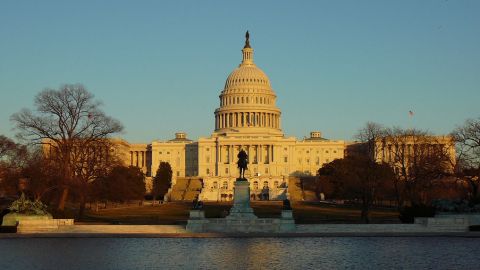What The Founders Can Teach Us About Government Accountability

When the government violates the Constitution, courts should assign blame clearly—not bury it under euphemisms.
What’s the Big Idea?
Judicial review is the process by which the judiciary weighs the constitutionality of actions by the other two branches of government. It’s one of the primary means by which our government checks and balances itself—and one that may soon cause headaches for President Obama. The President may have exceeded his power through his actions in Libya; Congress may have exceeded its authority through the individual mandate requirement in health care reform legislation. Yet by long precedent, the language in which courts actually declare Congress or the White House guilty of wrongdoing is highly euphemistic, carefully avoiding specifics as to who violated the Constitution or when.
In two papers published in the Stanford Law Review (“The Subjects of the Constitution” and “The Objects of the Constitution“), Nicholas Quinn Rosenkranz, Professor of Law at Georgetown University, explains: “As a general matter, the Court is maddeningly vague about exactly who has violated the Constitution. If Congress makes a law, the President executes the law, and a constitutional right is violated, it must be that either Congress or the President violated the Constitution. And yet the Court rarely says that ‘Congress has violated the Constitution’ or ‘the President has violated the Constitution.’ Instead, it has hit upon a formulation that elides this most important question. It has taken to saying: ‘the statute violates the Constitution.’”
Why care about such a seeming technicality? This kind of hedged language, Rosenkranz argues, “has corrupted and confused the nation’s dialogue about its Constitution—in classrooms and courtrooms, in law reviews and editorial pages….To say that “a statute”—rather than a government official—violates the Constitution…renders our government more opaque and less accountable, so that the people do not know whom to blame, whom to vote against, whom to impeach.”
What’s the Significance?
The problem is compounded, according to Rosenkranz, by the way in which courts distinguish between challenges to specific applications of statutes and broader challenges to statutes themselves. The latter are heavily “disfavored” by precedent, while the jargon that cloaks both kinds of challenge is idiosyncratic and misleading, further obscuring culpability and potentially clearing a path for future violations.
Rosenkranz emphasizes that this muddle was not what the Founders and early justices intended. He notes that a government in whichseparate branches are viewed as potentially liable for wrongdoing “is one of the principal structural differences between the United States Constitution and the government that the Framers left behind”—that is, England’s, in which demands for accountability were directed solely (in Madison’s words) “against the royal prerogative.” Chief Justice John Marshall, for his part, called the who’s-to-blame question “of great importance,” not least because the Constitution applies different restrictions to different branches of government.
The solution, according to Rosenkranz, is simple. Courts should liberate their rulings from unnecessary passive constructions, fudge phrases like “this statute violated the Constitution,” and, in general, any locution that “hails from the familiar, passive, elusive, ‘mistakes were made’ school of constitutional responsibility.” The stakes are much higher than grammar: even if federal courts were to rule, for example, that the current Libyan conflict is unconstitutional, there is no guarantee that they would find anyone in particular at fault, or couch their decision in words that would prevent future Administrations from taking a similar course.
As Rosenkranz explains:
“[This] approach begins with a grammatical exercise: identifying the subjects and objects of the Constitution. But this is hardly linguistic casuistry or grammatical fetishism. The subjects and objects of the Constitution are not merely features of constitutional text; they are the very pillars of constitutional structure. The very words ‘federalism’ and ‘separation of powers’ are simply shorthand for the deep truth that the Constitution empowers and restricts different governmental actors in different ways. Indeed, this is the primary strategy that the Constitution deploys to constrain governmental power; more than any other principle of institutional design, the Framers pinned their hopes on the axiom that ambition may counteract ambition. And so, in allocating each governmental power—and in ‘giv[ing] to each [branch] a constitutional control over the others’—the first question was, inevitably, who? To elide the who question is to overlook the central feature of our constitutional structure. And it is this structure, above all, that is the object of the Constitution.”
Rosenkranz’s argument is starting to take hold. In fact, the Seventh Circuit just adopted a central piece of his analysis in an important Second Amendment case just last week. See Ezell v. Chicago, No. 10-3525, pp. 20-23.
Rosenkranz’s forthcoming book, The Subjects of the Constitution, will be published by Oxford University Press in 2012.





